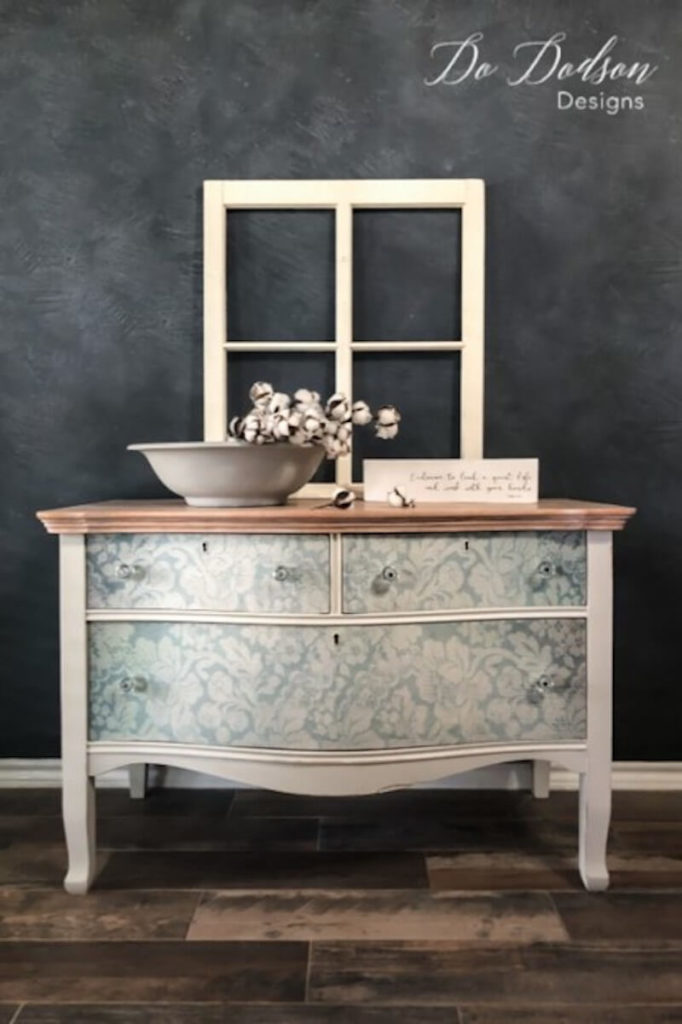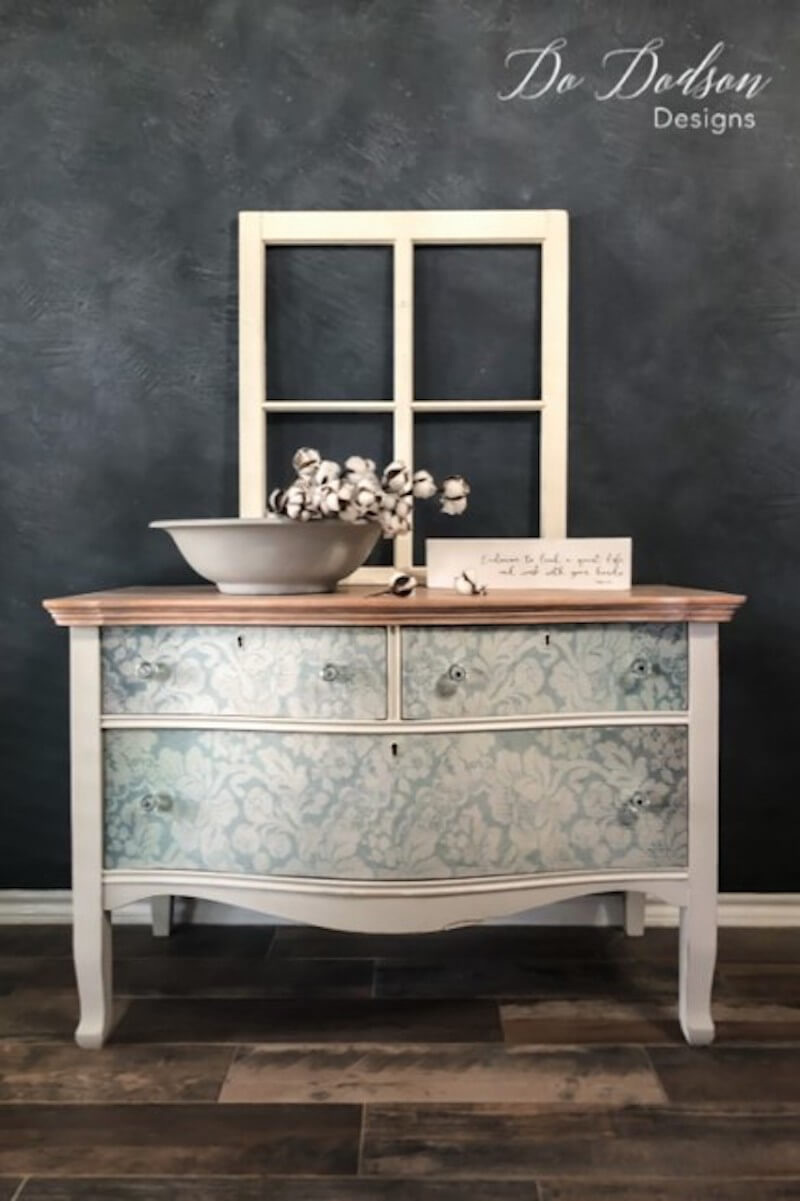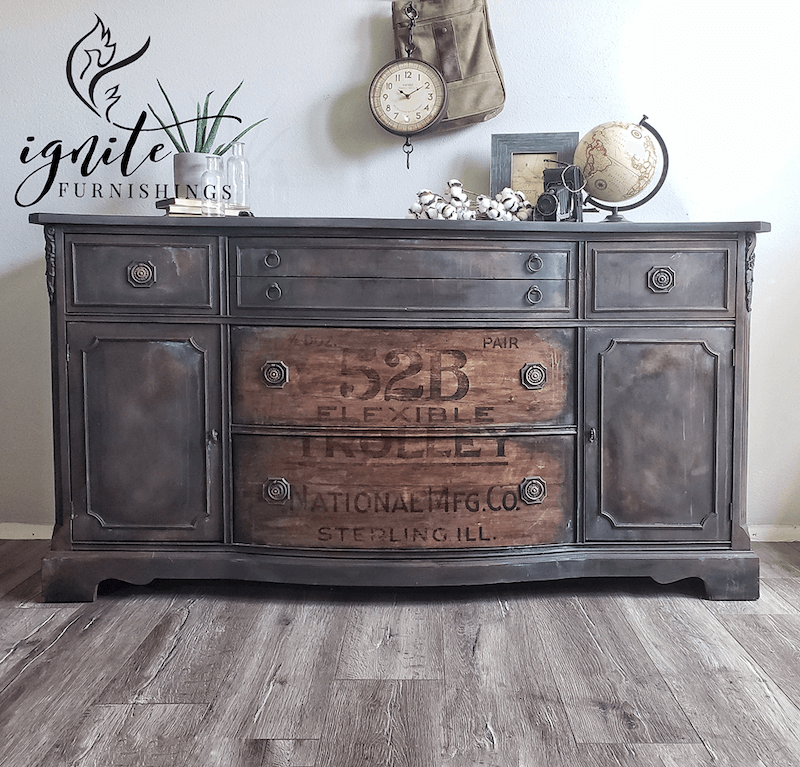We love our custom tissue paper customers, since they are so often creative people who love to make their interesting products special! Just when we think we’ve found the most inventive use of custom tissue paper, another comes along that takes a whole new twist on the capabilities of custom tissue paper. Digiwrap customer Roycycled Treasures works in the upcycled furniture business—but she does more than takes the shabby and makes it chic. She creates works of art—and a key ingredient to her process is her custom-designed tissue paper that she uses to decoupage everything from old door fronts to desks and trunks and everything in between. She both upcycles her own projects and designs a popular line of large-scale tissue paper for others to use on their decoupage projects—check out the designs on her store.
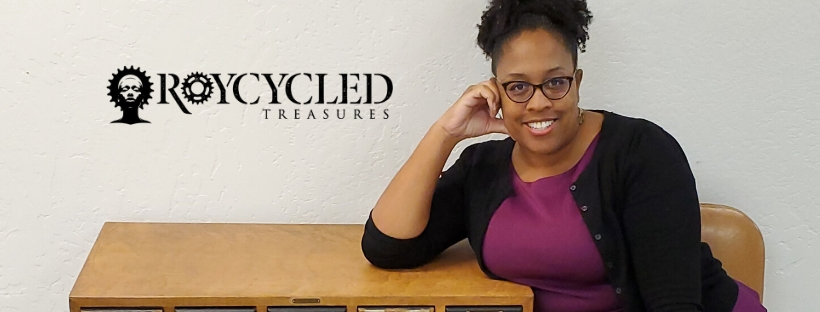
We sat down with Royce to understand her path to designing custom tissue paper and upcycling, to find out why Digiwrap tissue paper works well for decoupage, and to get an idea of what inspires her obvious creative genius!
Photographs show Roycycled Treasures tissue paper designs, used on projects of various makers across the country! Click most photos to be linked to the upcycler’s website.
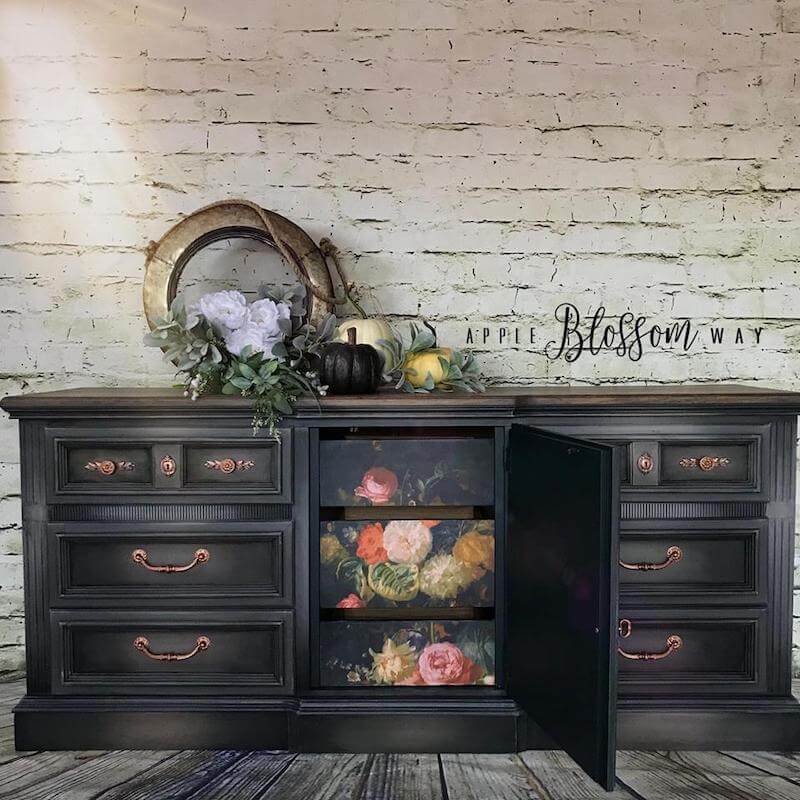
How did you get into furniture upcycling?
I’ve always been crafty. I used to deal with papier-mâché deer heads. I shipped them all over the world—and then Hannah Anderson ordered 50 of them for a store. That was the last I made because it’s so time consuming. When I was done, I started looking around for things to do. I started doing small furniture pieces. I was looking at a desk I had painted white and thought it would be cool if I could get script on the drawer faces—I love ephemera. That idea started all the trouble. I started scouring the Internet looking for script tissue paper. But the script wasn’t anywhere on tissue, so I stumbled onto Zazzle, where you can design your own tissue paper that Digiwrap prints, and I made me some.
From there, I had a vision—but the products to execute the idea didn’t exist. The issue with decoupaging furniture is that you can find small tissue with small patterns, and when you put that on a piece of furniture, it doesn’t have as big of an impact. So I decided to make designs that were bigger so they would have a larger impact. I started a line of designs on Zazzle that were scaled for larger decoupage projects.
What is your design background?
I don’t have a background in design at all. I’ve just always been creative and my mind works the way it works. I’m trying to be better now and am taking courses. It’s funny because a lot of the things I’m learning I was already applying to my own designs—it’s just how my mind balances things.
At first, I would use my designs for myself and save it on Zazzle—I have a very specific aesthetic. I like “the weirder stuff”—a very steampunk feel. But I have a lot of friends who upcycle and repurpose. One friend likes a farmhouse style. She was like, “I need some chickens and country stuff. Help me out.” After designing some for friends for about a year, I realized there was a market for it—I thought I would see what happened. Then I started listing my designs 3 years ago on Zazzle. It’s really just taken off in the last year and a half. A lot is because I’ve been pouring more effort into my business. Once I started selling my designs, my customers would make requests—floral, butterflies. That has led a lot of my designs.
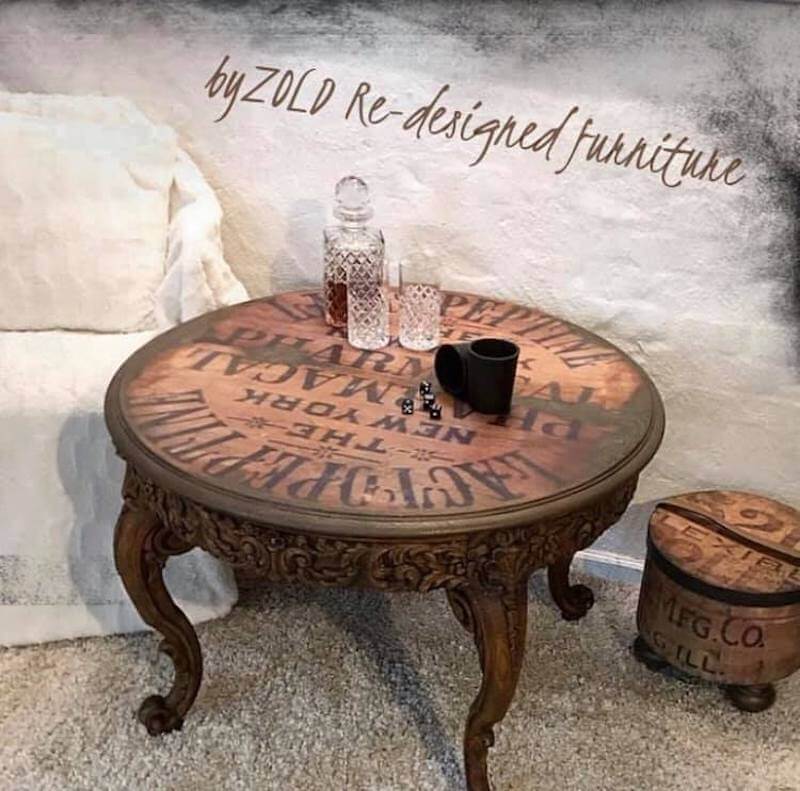
What are you passionate about?
I love teaching and I am inspired by my students. I work full time and take care of my mom full time. I don’t have time to do all the pieces I used to. Moving forward, I’m looking to do more designing and instruction. I do tutorials and teach others how to do furniture upcycling projects and decoupage. Teaching a class and watching that “aha!” moment is like gold. I love helping others just coming into the industry. And my customers are so much more talented than I am. They are awesome.
I’m also looking forward to experimenting with products. I’m always going to have a project going because I have to—I really do—I have to create. In my day job I do a lot of left brain lifting. When I come home, I have to create.
How do you decide what to upcycle next?
You’re going to laugh at me but it’s the truth: the pieces tell me what they want. Sometimes I don’t agree with them and try to do something different, but it never works out! So a piece will speak to me, and I will buy it and make it new. Sometimes I take something old and change it into something else—I’ll take the bottom of a trunk, put legs on it, add a top, and make it into a console table. But truly, my projects tell me what they want. I recently finished a project, but it didn’t agree with me that it was done, so I started working on it again this week—and it’s turning out totally different!


Roycycled Treasures
What inspires you when you are designing something new?
It depends. It’s always different. I collect ephemera and have an attachment. My friends think I’m crazy, but I might come across an invoice from 1890 with a cool header, and my mind starts mulling over possibilities. In the 1800s, typography was an art form. People would take it very seriously to show off what they do. So ephemera moves me creatively the most. Sometimes I’ll see something beautiful, like an old book, and I’ll think, “Ooo, I wonder if…”. And the more I create, the more ideas I have. I’m working on a design right now that has prompted other ideas. So instead of one design, I have 4 designs, and these all spark others. The inspiration comes and goes in cycles, also. I’ll be in a mode like this and create, and then I won’t for a while.
Do you have tips for anyone interested in trying their own decoupage for the first time?
Be prepared to be patient. You may not do it right the first time. A lot of people try it once and are discouraged. But you can get the hang of it, and then it’s not that hard. It’s a beautiful way to personalize your environment. The things in your home that you love can truly be made yours. If you are just starting, I encourage you to practice with inexpensive tissue and materials. At first, try on a flat surface or an old cabinet door or a piece of wood. Try on something you’re not in love with, so if something goes bad, it’s not a huge deal.
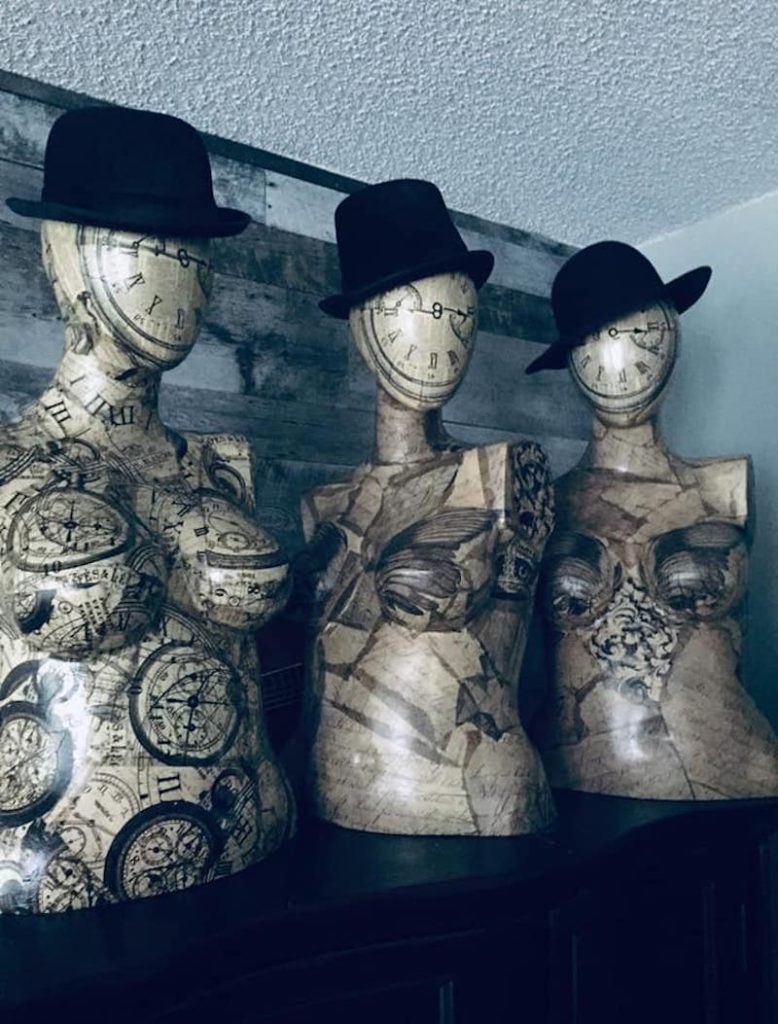
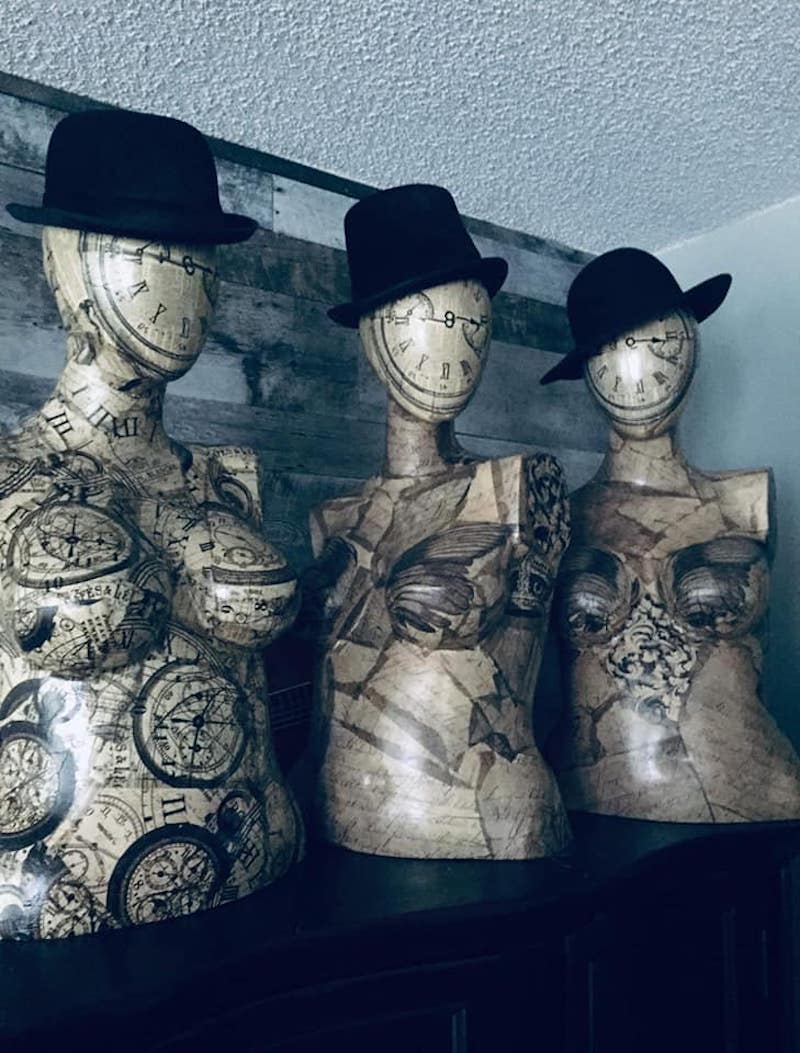
Tracy Johansen
Why does Digiwrap tissue paper work well for decoupaging furniture?
I love the paper. The print quality is phenomenal. I love the fact that it doesn’t bleed at all. When I’m applying with a varnish, I don’t have to worry about any kind of bleed that will affect the design. Also, the 18# paper is perfect for decoupage. And you can use 10# if you have experience, but it is easy to get a wrinkly mess with those sheets if you don’t have experience. 18# is the perfect weight because you still get to maintain the benefits of decoupaging, but it’s heavier so easier to manage. And 20” x 30” is the perfect size to give an opportunity for scale. I can produce things that really make an impact. Also, since it’s digitally printed, my design options are limitless.
I am really grateful for Digiwrap. I don’t know if they realize it or not, but, creatively, it’s not always possible to take what’s in your head and make it happen. But I can with this product—because it’s not a regular printing press with 3 colors to choose from…it’s limitless. I feel like as a designer, I can create anything I want to, which enables me and other creatives to make beautiful pieces of functional artwork. The designs empower other creatives to do more. That’s huge! I’m grateful to be a part of that.
Are you interested in Royce’s designs for decoupaging furniture? Check them out on her store.



